














by the Editor-in-Chief

Welcome to the Fall Edition of Ladies Corner Magazine.
In this special issue, we are delighted to present a range of inspiring features and updates that highlight the remarkable contributions of individuals and organizations in our community
We are excited to introduce David Sowemimo, the visionary behind the new law rm Watchmakerlaw com We also celebrate Mrs. Angela Eweka, who marks a milestone 50th birthday in our community pages. This issue shines a spotlight on ve extraordinary women who lead impactful non-prots: - Tayo Elnathan, CEO of the Financial Empowerment Initiative (thefei.ca), known for their annual tax clinics and the agship Money and Marriage Seminars.
Ang'er Dang Ruay, Director at the South Sudanese Community of Calgary, whose passionate work with South Sudanese youths makes a signicant difference.
Pastor Dee Adekugbe, CEO of Ruth’s House Canada, providing essential shelter for those affected by domestic violence, including their men’s shelter, Mandela’s House.
Bukola Ojemakinde, founder of Ladies in t h e F a m i l y F o u n d a t i o n a n d HERConnects ca, offering vital mental health support for women in Calgary

Yinka Oladele, of the Oladele Foundation and African Cancer Support Initiative, dedicated to destigmatizing cancer through education and awareness.
We hope these stories of resilience and dedication inspire and uplift you.
In loving memory of Tunde Adeyemo, our talented graphic designer, devoted brother, loving father, and cherished friend. Tunde was an integral part of Ladies Corner magazine, bringing his artistic genius and passion to every project he touched. His creativity not only shaped the visual identity of the magazine, but also added depth and beauty to every edition.
Tunde was more than just a designer; he was the heart of our team. His warmth, generosity and constant support made him a brother to all of us.
His legacy continues through the pages of Ladies Corner magazine, where his work and spirit will always be a part of our journey Though we miss him deeply, we take comfort in knowing that his impact will be felt for years to come.
This edition is a tribute to his remarkable talent, unwaivering kindness, and the lasting mark he left on all our lives.
Thank you for being part of our journey and celebrating these exceptional women and their impactful work.
Warm regards,
TAdeyemo Editor-in-Chief

EDITOR-IN-CHIEF
Tee Adeyemo info@lccmediafoundation.ca
CONTRIBUTING WRITERS
Lorrie Morales
Mary Thomas Stella Igweamaka
SENIOR EDITOR
Lorrie Morales
MARKETING MANAGER/ADVERTS
Miss Purple Media 587 974 9830
DESIGN DIRECTOR
John Nduaguibe jnduaguibe@gmail.com
BUSINESS DIRECTOR Tayo Elnathan tayo@thefei.ca
EMAIL info@lccmediafoundation.ca
WEBSITE www.ladiescorner.ca
This magazine or parts thereof may not be reproduced in any form, stored in a retrieval system, or transmitted in any form by any means - electronic, mechanical, photocopy, recording, or otherwise without prior written permission of the publisher Ladies Corner Canada Limited, Suite 3400, 10180101 Street, Edmonton, T5J 3S4



Ladies in the Family Foundation is a not
for prot organization that promotes emotional wellness and social equity for immigrant women with a focus on black women. Their goal is to help women and girls connect, understand and manage their well being emotionally, psychologically, economicallyandsocially
Founder and Executive Director of the foundation, Bukola Ojemakinde says the reason for the organization is to have every immigrant woman and girl settled successfully into Canada and for everyone who receives help to give back to the community in some capacity. This is what drove her to be committed to community within the Calgary area and beyond. Years ago, community outreach began to make people aware of the program by hosting events such as Alberta Culture Days and International Women's Day The organizationhasayouthprogramsuchasthe “cooking for inclusion” which addresses mentalhealthissues,bullyingandracism.
They expose the girls to culture, customs and support. Light up our Podium is another program against racism “using arts-based intervention ” Drawing, dance, poetry, spoken word, music and even making Tshirts are some of the activities. HerConnect is a mental health support available but it is a signature program for women. “I am naturallygiftedasaconnector,”Bukolastates.
One of the challenges the Foundation has faced is people giving of themselves. For example, the Board of Directors are volunteers, as well as others, but more
volunteers are needed. The second challenge is getting reliable funding. Applying for grants is one avenue to continue. “Getting value for every dollar spent” is evident with the funding from the City of Calgary Lettingtheworkspeakforwhatthey do, will hopefully enable them to receive reappliedfundingforanotheryearortwo.
The third challenge is dissolving the mind-set of black people by convincing them that the messaging and content in the programming is excellent as well as paying forward and giving back by contributing time and money andskills.Thefourthchallengeisbuildingthat network of reliable, sustainable partnerships, suchasAlbertablackTherapistnetwork.The City of Calgary also helped fund the new programHerConnectsforthisyear
There are a number of ways to access the foundation's services Individuals can call (587) 893-9355 or use the link on the website, herconnects.ca. HerConnects also offers information in different languages. Exposure on TV, in magazines, on radio and other platforms allows people to share their testimonies and the productive work HerConnectsisdoing.
Bukola wants to impact the next generation. All one needs to do is ask for support, resourcesandhelpandthenreceiveandgive back. Bukola was honored as a nalist at the 2024 Immigrants of Distinction Awards for her exceptional contributions to social servicesandcommunitydevelopment.
To nd out more, visit HerConnects.ca and www.ladiesinthefamily.com.

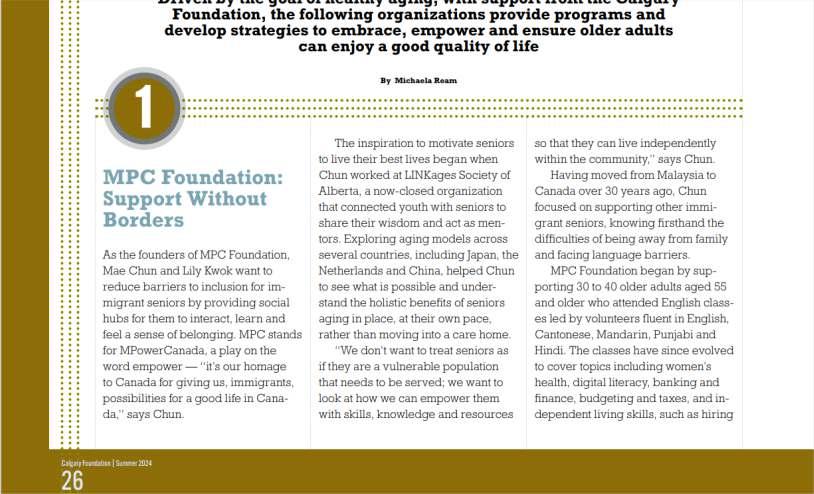


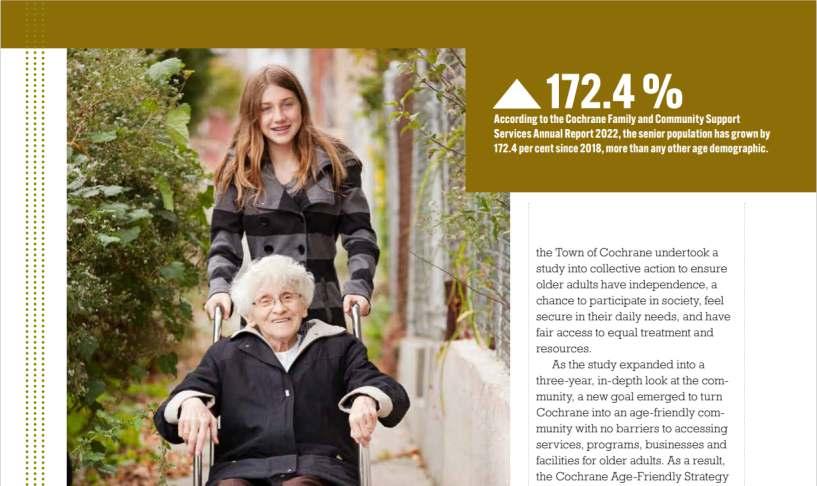
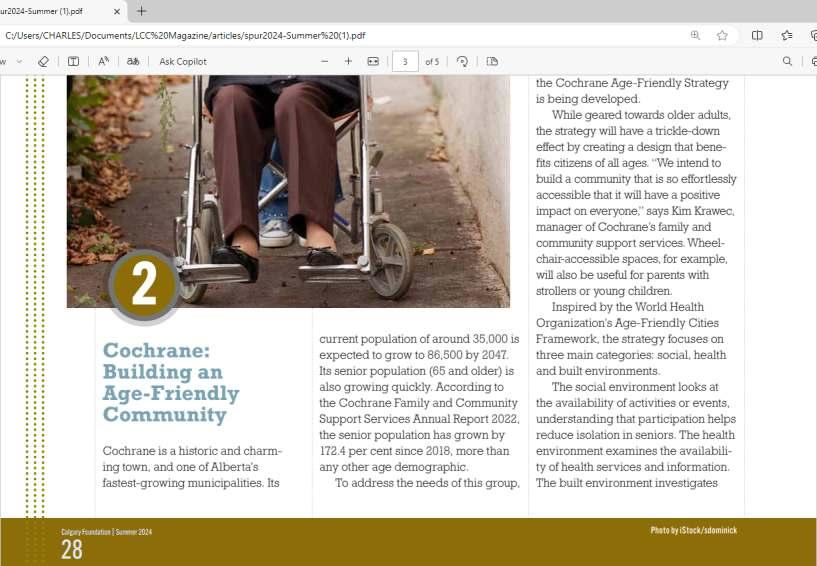


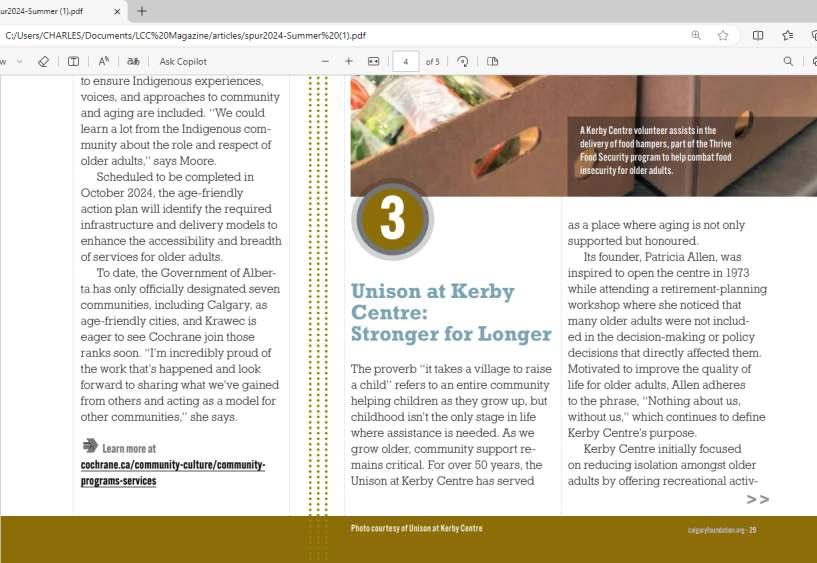
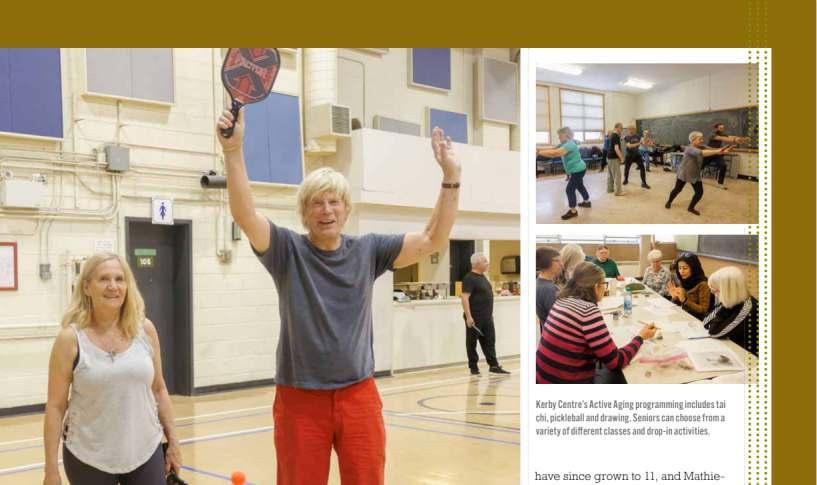
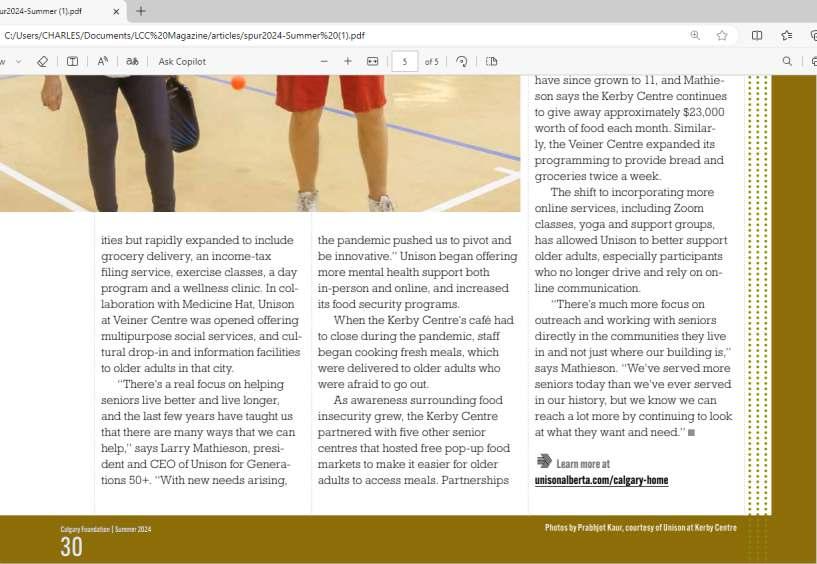
Mary Thomas
NUnwittingly you could character Such was woman posted and a woman New York having an name. ( deleted.) man was the pair ir ight. She enough to she included video, she empty seats ended up caption. York Times Kitchener The above example the soc implications of people The burgeoning and thought realms of articial makes u resulting implications. and wa governments away basic



policy now in schools seems like a welcome relief for parents. Social media has a reinforcing nature Using it activates the brain's reward center by releasing dopamine, a “feel-good chemical” linked to pleasurable activities such as sex, food, and social interaction. When we post something, our friends and family can “like” it, giving us a boost of dopamine. However, when we don't get that boost or approval, it can impact our sense of self and adequacy. These platforms are designed to be addictive and are associated with anxiety, depression, and even physical ailments. According to the Pew Research Center, 69% of adults and 81% of teens in the U.S. use social media. Earlier adulting was synonymous with anxiety, depression, or psychosomatic disorders. Now the age group has reduced to children and babies whose parent use devices as a method to distract children while they complete chores etc.
For many of us, checking Instagram, Facebook, TikTok and other social media is a part of our normal routine. In 2023, there was an estimated 4.9 billion social media users worldwide The average person spends 145 minutes on social media every day Viewing posts from friends and family across the world can be a way to make you feel more connected. However, social media use has a dark side.
Social media is here to stay and will continue to evolve and become more invasive. If excessive use of social media has left you feeling sad, dissatised, frustrated, or lonely, it may be time to reexamine your relationship with your online presence.
Social media heavily focuses on physical appearance Many social media platforms – such as Snapchat, Instagram, and TikTok – provide users with the option to use lters on an image. Filters can be great for a laugh, but the ability to easily alter physical appearance








and hide imperfections can create false illusions. Constant exposure to altered images can also lead you to feel selfconscious and dislike the way you look.
FOMO (Fear of Missing Out): The use of social media increases feelings of FOMO for many people. Checking in on your friends and family through social media may make you feel that others are having more fun or living better lives than you are.
Social media is often called a “highlight reel,” displaying the best parts of a user's life. However, having access to other's highlight reels can increase our own feelings of dissatisfaction with our own day-to-day. This can impact self-esteem, trigger anxiety, and make us want to use social media more. FOMO can also compel users to constantly check social media so that they don't miss out on what's happening.
In 2020, 44% of all internet users in the U.S. said they have experienced online harassment Cyberbullying is when someone repeatedly and intentionally harasses, mistreats, or makes fun of another person by way of an electronic device It can severely impact selfesteem and mental health. Social media platfor ms can be hotspots for cyberbullying and spreading hurtful rumors, lies, and abuse that can leave lasting emotional scars. Mental health issues among teens have
been rising for more than a decade, and some experts wonder how much social media use is to blame. If you're a parent questioning if—and how—you should monitor the way your teenager uses social media, you're not alone. When it comes to mobile usage not only kids but us adults too have to limit ourselves, after all we set examples for our kids. Ever since this new generation was born, they see this little device in their parents' hands and for them it's a normal thing. We the people of the 80s and 90s saw the change but these kids having seen us stuck to our gadgets, imbibe these cellphone behaviors. To limit kids, we must limit ourselves rst. We need to show that we can put our phones away and the kids will follow automatically. We have to get involved in activities with our family and friends.
When a kid is fussy, don't give them the phone to sush! them, rather use emotional tactics to handle. I made some changes and I am seeing great results in our house phone habits already " - Rahil Verma, Founder Celebrations Events and Small Business Banking Expert with Scotiabank.
In the spring of 2023, United States Surgeon General, Vivek Murthy, MD, MBA, released an advisory called social media and Youth Mental Health, in which he says there is growing evidence that social media is causing harm to young people's mental health. Soon after, the




American Psychological Association (APA) issued its own health advisory.
The issue is complicated, however While there are indicators that it can have a profound risk of harm to teens, social media use aimed at making healthy connections with others may actually be benecial to some people. Dr Murthy's report indicates that more research is needed to fully understand the impact of social media and whether it could change neural pathways and distort behavior For parents there are no easy answers. As parents, device use needs be monitored: the amount of time spent on platforms, the type of content consumed, and the degree to which online interactions disrupt activities essential for health, such as sleep and exercise. The report stresses that the brain is going through a highly sensitive period between the ages of 10 and 19, when identities and feelings of self-worth are forming. Frequent social media use may be associated with distinct changes in the developing brain, potentially affecting such functions as emotional learning and behavior, impulse control, and emotional regulation.
Some teenagers experience a benet when they use social media to foster positive connections with others who share common interests or identities, creating spaces for self-expression Relationships formed in communities like these can create opportunities for

positive interactions, learning and sharing with more diverse peer groups than are available ofine.
A 2022 survey of American teenagers and their parents by the Pew Research Center, which showed that a majority of respondents felt that social media helps teenagers feel more accepted (58%), like they have people who can support them through tough times (67%), that they have a place to show their creative side (71%), and that they are more connected to what's going on in their friends' lives (80%).
However, over the last decade, increasing evidence has identied the potential negative impact of social media on adolescents. According to a research study of American teens ages 12-15, those who used social media over three hours each day faced twice the risk of having negative mental health outcomes, including depression and anxiety symptoms.
Other studies "point to a higher relative concern of harm in adolescent girls and those already experiencing poor mental health, as well as for particular health outcomes, such as cyberbullying-related depression, body image and disordered eating behaviors, and poor sleep quality linked to social media use."
“What's more, the social media algorithms are built to promote whatever you seem interested in,” says Dr. Varghese. “If a teen searches for any kind
of mental health condition, such as depression or suicide, it's going to feed them information, so soon they may begin to think that everyone around them is depressed or thinking about suicide, which is terrible for mental health.”
Teens can easily access extreme, inappropriate, and harmful content. In certain cases, deaths have been linked to suicide- and self-harm-related content, such as “cutting,” partial asphyxiation, and risk-taking challenges on social media platforms. Studies also found that discussing or showing this content can normalize these behaviors.
Eating disorders are yet another concern.
A review of 50 studies across 17 countries between 2016 and 2021 published in PLOS Global Public Health suggested that relentless online exposure to largely unattainable physical ideals may trigger a distorted sense of self and eating disorders, a particular problem among girls.
In addition, pedophiles and those who target adolescents—for instance, adults seeking to sexually exploit teens or nancially extort them through the threat or distribution of intimate images—may use social media platforms for these predatory behaviors.
Some researchers think that exposure to social media can overstimulate the brain's reward center and, when the stimulation becomes excessive, can trigger pathways comparable to addiction. Excessive use has been linked to sleep problems, attention problems, and feelings of exclusion in adolescents. In 2022, up to 95% of teenagers in US surveyed reported using social media, and more than a third of them use it “almost constantly.” In 2023, it found the majority of teens—9 out of 10 for those ages 13 to 17—use YouTube, followed by TikTok, Snapchat, and Instagram.
Parents should:
1. Determine the age your child will have access to social media.
The minimum age most commonly Contd. on page 17








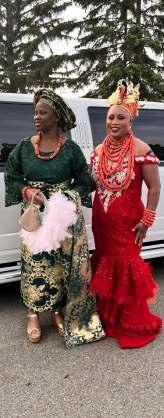

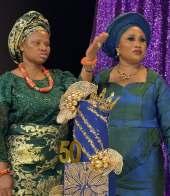
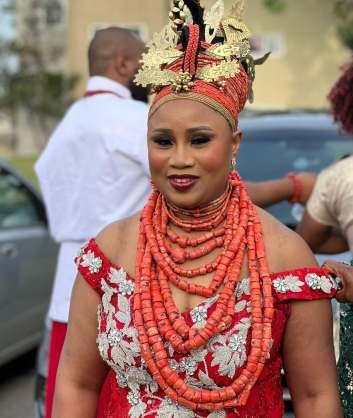



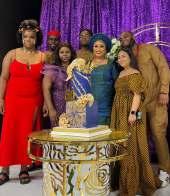

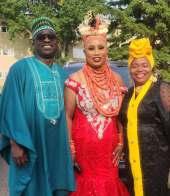




Ang'er Dang Ruay, Director of the South Sudanese community in Calgary and a group of 4
individuals recognized the lack of unity that carried over from the war in South Sudan. In November of 2022, they held a Healing and Reconciliation Conference strictly for the South Sudanese community in Calgary.
This was the stepping stone, because “after that the community came together, and they now are working together as a group,” she shares. Applying for grants and receiving monies from the Calgary Foundation, allowed the community to offer and run programs, like the soccer and basketball summer camps, women empowerment workshop and a cultural event. This year they are offering their summer program again and hoping that it will be sustainable for the future.
South Sudanese problems are quite unique in that people are refugees. “I myself - I'm an example … I grew up in war.” Ang'er states. Many immigrants have trauma or mental issues because of war and have lost family members. Then there is the lack of education and many Sudanese in Calgary are homeless. There is a need to work together with the city and the police to mitigate problems such as youth addictions, gangs and violence. Many migrants are working several entry level jobs, providing for their families at the expense of spending time with children. There is also the language barrier. Keeping the youth engaged in meaningful activities is one reason for the community initiative summer program.
There are not a lot of programs in the community due to lack of funding, but the summer basketball program has over 50 children.
Personally, “I am a strong advocate for education,” Ang'er reveals. If funds were available, she would run a tutoring program for children so they were procient in English. If there was a facility for the homeless to receive hot meals and rehabilitate, that would be her second initiative. Homeless are unable to access government services because they have no physical address. Some want to return to Sudan but need documentation to do so. Ang'er's group would help facilitate that. Women need training for capacity building and resources for mental health. Because of culture, many are unable to express what they are facing. As a black woman, Ang'er does not want to feel guilty about asking for help. Another area of concern is the need for career coaching, healthy eating habits, and even child care. As leaders, “we want to create events where we are able to bring out the women to come and socialize.”
Members of the community can do many things to help support children and youth. First of all, they need to be engaged. Many boys enjoy basketball and soccer, so programs throughout the year would be benecial, as well as nancial assistance for families because of rising costs for food. As a mother, Ang'er knows that she has made a difference in the world. Even though there are times when she is exhausted, she loves what she does. Her purpose is changing the life of a child, one at a time.
Contd. from page 13
required by social media platforms in the U.S. is 13, nearly 40% of children ages 8–12 use social media. Kids can start with a “dumbphone,” a cell phone that doesn't have email, an internet browser, a n d o t h e r f e a t u r e s f o u n d o n smartphones.
Dr Varghese's suggestion to parents is delaying full access to smartphones for as long as possible, opting for a device allowing you to add more apps as your child matures.
The American Academy of Pediatrics offers a tool to help parents create a plan that in addition to setting the age at which to start giving your kids phones or internet access, can be used to establish rules and educate children and teens about exercising caution, avoiding strangers online, not giving out personal information, and knowing how to report cyberbullying.
2. Keep devices out of the bedroom. Research shows a relationship between social media use and poor sleep quality, reduced sleep duration, and sleep difculties in young people. For teens, poor sleep is linked to emotional health issues and a higher risk for suicide. Nearly one-third of adolescents' report using screen media until midnight or later “Knowing that, try to create a culture at home where all phones are turned off by a certain time, and make sure it's at least one hour before going to bed,” Dr Varghese says. “Having these open conversations is critical.”
3. Keep the lines of communication open, and let your teen make mistakes. It will be easier to talk to your teens about social media if you have comfortable conversations with them about other issues, doctors say “An important part of the teenage years is guring out who you are in the world. So, it's important for them to explore and even make mistakes without you hovering around them. The goal is to keep lines of communication open and establish some trust with your
child, so they'll come to you if there are issues,” advised our family physician. 4. Be mindful of your approach when talking to your teen. You might even need to be assertive, for instance, saying, "I've noticed that you're on your phone until 1 a.m. When I go to the bathroom, your light is on, and you're on your phone. That's not healthy So, can we come up with a plan that you're most comfortable with?"
5.Followtherulesyourself.
As a parent, you are a role model and that means following all the same rules you are setting for your children—if you ask your teenager to limit their screen time, you should do so as well It helps acknowledging to your teenagers that you often nd it difcult to put down your devices, too. “This a global issue, where parents want their kids to do things differently and better than they do,” Dr Varghese says.
Monitor your teen's accounts The American Psychological Association recommends you regularly review your child's social media use during the early teen years. One way to monitor is to follow or "friend" your child's social accounts. As your teen gets older, you can choose to monitor your teen's social media less. Your teen's maturity level can help guide your decision.
Explain what's not OK. Remind your teen that it's hurtful to gossip, spread rumors, bully or harm someone's reputation — online or otherwise. Also remind your teen not to share personal information with strangers online This includes people's addresses, telephone numbers, passwords, and bank or credit card numbers.
Encourage face-to-face contact with friends. This is even more important for teens prone to social anxiety

How can we safely use social media and decrease screen time:
1.Set time limits on social media apps within your phone settings
2.Designate specic hours for social media usage
3.Look through your friends and followers list and unfriend people whose accounts make you feel bad about yourself
4.Find fulllment and happiness outside of social media
5.Prioritize in-person connections and activities to help improve your mental health. This helps to decrease screen time.
Talk to your child's healthcare professional if you think your teen has symptoms of anxiety, depression or other mental health concerns related to social media use, especially if your teen has any of the following symptoms:
1.Uses social media even when wanting to stop.
2.Uses it so much that school, sleep, activities or relationships suffer.
3.Often spends more time on social platforms than you intended.
Mary Thomas is a Canadian journalist. She writes regularly forLCCMedia.
4.Lies in order to use social media. We as a generation are grappling with many questions that affect the lives of future generations besides the progression global warming, global economic shifts and the world becoming a village, the dubious overindulgence and dependence on social media and AI will determine how life continues on our blue planet.

By Stella Igweamaka
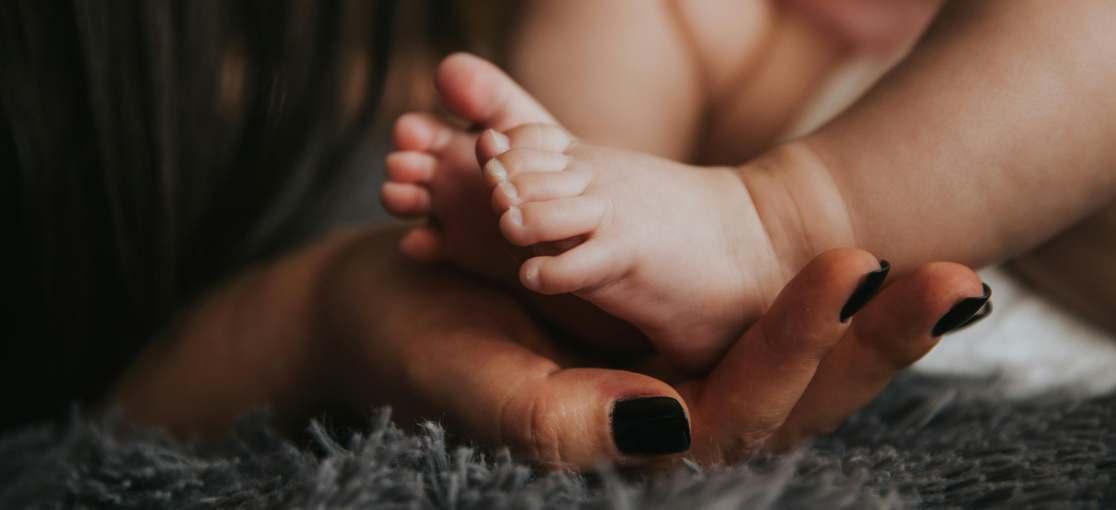
or many Edmonton moms,
the birth of a child is a magical, unforgettable moment. Yet, for some, it can also be an emotional roller coaster. The journey from pregnancy to parenthood for mothers has no right or wrong way to feel. It's simply a time when everyone's feelings are valid. There is no doubt that once you welcome home a baby, nothing is ever the same again. Yes, it is exciting and joyful, but it can also be completely overwhelming. I had the pleasure of connecting with a few local moms who generously shared their stories and perspectives, offering a heartfelt glimpse into their journey from pregnancy to parenthood.
At 28, rst-time mom Kimberely enjoyed her pregnancy and anticipated a similar joy in motherhood. "I imagined it would be effortless, that I'd immediately bond with my baby, and that my maternal instincts would just take over," explains Kimberely, who resides in
Ward Nakota Isga (Central West Edmonton) with her husband and six-month-old daughter. However, she faced a reality of conicting feelings and an evolving sense of self as she endeavored to adjust to her new role. "Being a mom is tough," she confesses, recognizing a truth that is often unspoken. For Kimberly, like many mothers in Edmonton, supports systems are the backbone of their journey and there is no rule book on what that support system should look like. With her immediate family living in New Brunswick, Kimberely had to nd local support. "The Edmonton Moms Facebook group became my lifeline," she laughed. "I could ask anything, from which prenatal vitamins to take to which stroller is the best. The advice and support I received were incredible." She was fortunate to also connect with second time mothers and the OGs from the group, drawing comfort and wisdom in their stories and advice.
Adetoun, a resident of Ward Oday'min (Central Edmonton) and a mother of two, highlighted the signicance of prenatal courses provided by Alberta Health Services "The classes were fantastic. Not only did they prepare us for childbirth, but we also made friends who were going through the same experiences," she explained. "Imagine, we still meet up for
playdates with our toddlers." The bonds formed in these classes often extend well beyond the birth of their babies, creating a network of support that lasts for years. Yet she believes that awareness about these prenatal classes needs to increase especially among immigrant mothers. Motherhood can feel very isolating, so it's crucial to identify the people who will show up for you Adetoun says.
Maintaining health and wellness throughout pregnancy and beyond is a primary concern for Edmonton mothers. However, the transition to motherhood signies a profound shift that affects every aspect of one's physical and psychological self. This transformation is known as matrescence, a term coined by medical anthropologist Dana Raphael in the 1970s. In her writings, she highlights that in some cultures we say, 'a woman has given birth,' while here we say, 'a child is born,'" says Aurélie Athan, a reproductive psychologist at Columbia University. "This shift places the emphasis on the child rather than the mother, often overlooking the mother's own transformation."
For Sarah, prenatal yoga classes and an active membership at the

Millwoods Community Recreation Centre was her way to stay active, manage stress, and nearly regain her pre-pregnancy body. "Exercising was a way to reclaim that relationship with my body while releasing mood-boosting endorphins," she says. "It also models for your child that self-care is important, showing them that you are worth taking care of."
Not every mother has the same exibility, though. Jada, a 35-yearold mother of two and resident of Ward Sipiwiyiniwak (West Edmonton), nds it challenging to stay active. "I miss my prepregnancy body. I've planned many times to go to the gym, but the membership is expensive, and with my husband working out of town, it's hard to nd time for home exercises."
Studies show that women need six to nine months to fully recover from labor and delivery, not just the arbitrary six-week checkup with an obstetrician or midwife. Adjusting to your postpartum self can take time. Some women might feel like their bodies no longer belong to them or that they always have a baby attached to them, making it harder to get those physical movements in.
"Think of self-care as refueling your tank," Sarah adds. "It's essential to keep yourself energized so you can be the bring your awesome self to parenthood."
"Joining the New Moms WhatsApp group was a real eye-opener for me as it stressed the importance of self-advocacy during medical appointments". Ngozi, who is also a
new mom and a recent immigrant, shared that her interactions with the group made her realize the importance of explicitly communicating with her doctors and nurses about the specic kind of care and support she required. In the diverse cultural landscape of Canada, not everyone comes from the same healthcare background, and it's crucial to have personalized care - something Ngozi notes might require reminding the city's healthcare team about. While it may not be self-advocacy for some, pain points such as sleep deprivation, breastfeeding challenges, and the delicate balance of work and motherhood were common experiences for these Edmonton moms. Sarah recalls her struggle with breastfeeding; "I thought it would come naturally, but it was hard," she said. "I had issues with latching, and it was painful. Thankfully, I found a lactation consultant at Misericordia Community Hospital who helped us gure it out.”
The Complex Joy it brings Amidst the challenges, countless moments of triumph make the journey worthwhile. Jada recounted the joy of her rst child's birth. "It was the most magical moment of my life," she said. "All the pain and exhaustion disappeared when I held him for the rst time." Sarah celebrated the community she built through her attendance at the Millwoods Community Recreation Centre. "Seeing other moms come together, support each other, and build friendships has been amazing," she said. "It's more
than just a gathering; it's a family."
The general sentiment from these Edmonton moms is that the journey from pregnancy to parenthood is unique and can be particularly difcult with round-the-clock infant care especially in the rst year. Yet, with a strong community, a focus on health and wellness, and a resilient spirit, the challenges of motherhood can be met with grace and triumph. The little wins and milestones, such as when they take their rst step or say their rst word, all culminate in a beautiful surge of emotions.
As Kimberely put it so beautifully, "Motherhood is the hardest, yet most rewarding job I've ever had. And having the support of fellow moms makes all the difference." Whether you're a new mom, a seasoned parent, or somewhere in between, these insights from Edmonton moms offer a relatable and heartfelt glimpse into the beautiful journey of raising children in Amiskwacîwâskahikan (Edmonton).
The author wishes to thank Kimberely, Adetoun, Sarah, Jada and Ngozi for generously sharing their stories and insights, enriching this article with their diverse experiences of pregnancy and motherhood in Edmonton.
Stella Igweamaka holds an MBA from the University of Lagos in Nigeria and is proud to call Amiskwacîwâskahikan (Edmonton) her home. She is passionate about using research and storytelling for impactful change and was recently featured on CBC News for her work with Black Canadian Women in Action on the adultication of Black girls in Canada. You can nd more of her work on www.stellaigweamaka.com

with Lisa Dublin
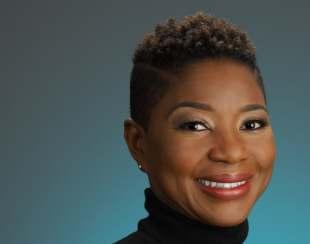
Idon't know what exactly makes
some people nd love easily, and some hanker after it for all their lives and never nd it, but I have a couple simple ideas.
Truth be told, I've experienced both the gut wrench of heartbreak and the peace of nding someone I can share the rest of my life with. My heart has been broken too many times in relationships; I've wanted someone who didn't want me; experienced cheating and one time, a boyfriend was physically abusive towards me. On the other hand, I'm also the woman who has been married for 20 years, happily so, to a man who I like and love and who is the father of my three sons. A mixed bag indeed. So how did things turn around for me?
W e l l t w o p r i n c i p a l t h i n g s :
1. I began to fall in love with God, and then as a result
2. I began to fall in love with ME. Men are beautiful, attractive and worthy of being admired (don't lie, you think so too!). But they are not as amazing as God.
When I began to put God in his rightful place, I took men off a pedestal that they could not uphold anyways Then I began to attract a different kind of person because I was no longer in need of a man to complete me..
Did you know that the more you let God love you, is the more you will feel uncomfortable with ill treatment of any kind? It's almost like, “If the God of the Universe calls me a daughter - a favored
daughter - who are you to treat me as less? Man, bye!”
You become so full of love that you are no longer attractive to, nor attracted by people of shady character or low caliber
Now when you fall in love with yourself, you become more attractive Men love a challenge, but a challenge is not a challenge if it is trying to play hard only to get a man. No sis, you literally have to BECOME hard to get. How? By not focusing on getting a partner Focus on living life to the fullest. He will come when he comes, and if he comes at all, but do not enjoy life and experience your own wonderful self only because you expect there to be a man at the end of the rainbow
Go about your own business - love will nd you, if at all.
I found love when I wasn't looking, after a heart-crushing hurt that convinced me to stop looking for love and go looking for myself. When I decided to really turn my loneliness on its head by convincing myself that I was okay by myself, I truly began to live. I started clubs, a literary magazine, took up exercise, wrote and performed poetry, became a news reporter, then an anchor on a live TV show, and more.
And it was while I was living life without holding back, that I looked across and met someone at work. It's ironic that I was working when I met my husband. He was the cameraman and I was the TV host. He would not have been able to catch my attention otherwise.
I truly believe that we all have an UMFY, a partner that is “Uniquely Made For You” (or
maybe a couple of them?) I meet a lot of women who are just disillusioned by relationships. I say to them, “You mean to tell me, of the 4 billion men on the face of the earth, there is not one that was meant for you? Believe again sis, because your words create your reality and where your focus goes, your energy ows.”
Think of your position as a girlfriend or wife as an ofce, a position that you hold (or plan to hold). This ofce is governed by rules, guidelines and expectations. What are the rules, guidelines and expectations of someone who wants to be a great partner? Who do you have to be?
Many women get caught up with, “But he shouldn't need that”, or “I shouldn't have to give respect”, or “So what about me?
Don't I need that kind of support too?”
You can choose to do whatever you like, sis. It's just that, if you're going to buy a Tesla, you have to go by Tesla's rules for its chosen few customers.
Relationships have manuals, and if we follow the manuals, we will nd that UMFY, or some version of our mate.
The questions in the manual are pretty basic but oft overlooked: Who is a man? What does a man need? What does a man want? And who am I? What do I need? What do I, as a woman, want?
Here are two other questions in the manual (and there are many more): What makes a man commit? How can I create enough scarcity right now, so that he decides that he wants a lifetime of me?
I will leave you to answer these questions for yourself
Where do we nd love? By rst turning to the God of love. When you're sufciently full of the God kind of love, you will have enough left over to attract a beautiful mate. Don't give up yet. There's a reason you read this article :)
Tondoutmoreaboutherwork,gotoher website, www.lisamdublin.com or follow heronYouTube@Basementchronicles.

LCCMedia was excited to spend some time with the Executive Director of Oladele Foundation, Mrs Yinka Oladele. Her passion for her work in the cancer space comes across from this conversation.
Can you tell us about the founding story of Oladele Foundation/ACSG and what inspired you to start this nonprot organization?
The Oladele Foundation was born out of a personal journey and a deep need we saw in our community. The inspiration to start this organization came from our own lived experiences. When my husband was diagnosed with cancer, I quickly realized there was a signicant gap in cancer resources and support tailored for African people. I realized that selfemployed people like myself cannot benet from EI or any government resources. I asked around and I could not get answers, and the lack of necessary information made me suffer nancially Navigating the healthcare system was challenging, and it became clear that many African families faced similar challenges. We lacked the right resources, support
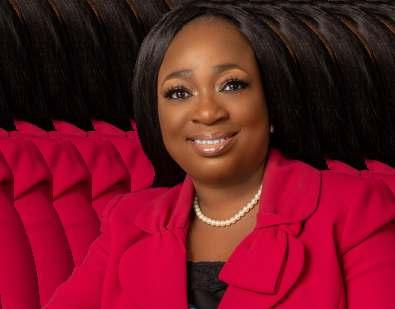
networks, and information specic to our cultural needs.
This gap made us create an organization dedicated to addressing these issues. Our mission is to provide the support, education, and advocacy needed to improve cancer care and awareness within the Black African community in Canada.
What is the primary mission of Oladele Foundation/ACSG, and how does it specically focus on helping Black African people in the ght against cancer?
The primary mission of the Oladele Foundation/ African Cancer Support Group (ACSG) is to provide support and resources to people of African descent who are dealing with cancer. We focus on helping individuals and families navigate the challenges of cancer treatment while ensuring they receive the appropriate care. We understand that ghting cancer is not just about medical treatment but also about havinga support system that understands your unique needs. That is, why we offer culturally appropriate support services, connect families with mental health therapists who have passed through
similar experiences, and ensure they have access to resources that make the journey a little easier.
In essence, we are here to make sure that no one in our community faces cancer alone and that they receive the care and support they deserve, rooted in the values and culture they hold in high esteem. It is a support services designed by us and for us!
How has the vision and mission of Oladele Foundation/ACSG evolved since its inception?
When we rst started the Oladele Foundation/African Cancer Support Group (ACSG), our main focus was on providing immediate support to families in our community who were struggling with cancer. We wanted to be there for them in practical ways—whether that meant offering a helping hand with everyday needs, connecting them with the right healthcare resources, or just being someone they could talk to.
As we grew, we realized that the need was much greater than we initially thought. It became pertinent to address bigger struggles and deal with bigger intricacies of cancer. Over the years, our vision expanded to include not just support, but also education and awareness.
We began working on raising awareness about cancer prevention and early detection within the African and Black Canadian communities as we realised that late diagnosis is one of the main causes of growing mortality rates in our community
Our mission also evolved to include a stronger focus on cultural sensitivity in healthcare. We understood that to make a real impact, we had to advocate for healthcare services that are tailored to our community’s unique needs. So, while our core mission of supporting those affected by cancer remains the same, our vision has grown to encompass a broader effort to change how our community experiences healthcare, ensuring they receive culturally appropriate care and support that they deserve.
What are some of the biggest challenges Oladele Foundation/ ACSG faces in its ght against cancer within the Black African community?
One of the biggest challenges we face is that many people in our community do not trust the healthcare system. This mistrust comes from past bad experiences where they felt their culture was not understood, hence, they often wait too long to seek help, which makes it harder to ght cancer as late diagnosis offers less benecial prognosis. Another challenge is that many people in our community do not know much about cancer, how to reduce their risk, detect symptoms when they present and follow up with it. There is also a stigma, or shame, that stops people from talking about cancer openly. Finding healthcare professionals
that understand and respect our culture can also pose some difculties, as there is very minute representation of Black African oncologists or oncology-related professionals in the system. Lastly but certainly not the least is getting enough resources and funding to keep up with the growing needs of our community. It is very tough raising funds through grants and donations only. When we started, we expended our resources for the rst two years, we just wanted to help and support others. We strive and work hard to make sure we can provide the help that is needed while we hope that our requests for grants, donations, and sponsorship will continue to garner necessary attention.
Please read the full conversation on www.ladiescorner.ca
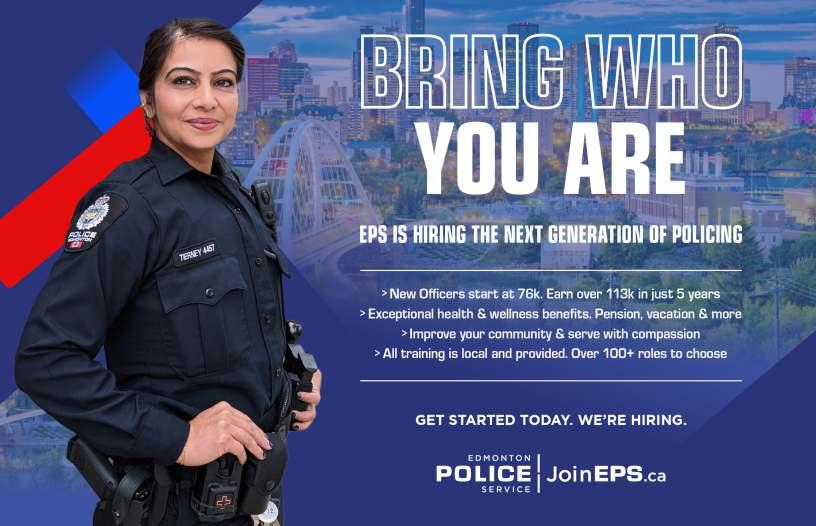


Insights from Tayo Elnathan on Empowerment and Liter
In a conversation with our
Editor, Tayo Elnathan, Director of the Financial Empowerment Initiative (thefei.ca), shared the impactful work of her organization in promoting nancial literacy and empowerment. Elnathan's passion for nancial education and community support is evident through their annual tax clinic and the acclaimed Money and Marriage Workshop.
The Financial Empowerment Initiative (thefei.ca) has carved a niche in providing essential nancial literacy programs that empower individuals to make informed nancial decisions. Elnathan elaborated on the signicance of their annual tax clinic, which serves as a cornerstone of their outreach efforts.
The clinic offers free tax preparation services to underserved communities, ensuring that individuals and families can access their entitled benets and tax refunds without the burden of high costs.
"One of our core missions is to bridge the gap in nancial literacy," Elnathan explained. "The tax clinic not only assists people in ling their taxes but also educates them on the importance of proper tax management and nancial planning. It’s about more than just ling returns; it’s about helping people
understand their nancial rights and obligations."
The conversation shifted to their agship program, the Money and Marriage Seminar, which is set to take place on September 21, 2024. This initiative addresses the unique nancial challenges faced by couples and aims to foster healthier nancial practices within relationships. Elnathan highlighted that the workshop provides couples and singletons with tools and strategies to navigate nancial discussions, budgeting, and longterm planning.
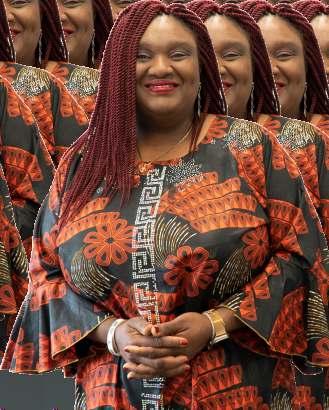
said. "We aim to instill condence in individuals to take control of their nancial lives. Financial literacy can be transformative, enabling people to make better choices, reduce stress, and achieve their nancial goals."

"Marriage often brings complex nancial dynamics," Elnathan noted. "Our workshop is designed to help couples build a solid nancial foundation together. We cover topics like joint budgeting, debt management, and saving for future goals. By equipping couples with practical knowledge and communication skills, we help them avoid common nancial pitfalls and build a secure nancial future." She stressed that the seminar was for every one not just couples. Elnathan’s approach emphasizes a holistic view of nancial empowerment, recognizing that nancial literacy is not just about understanding numbers but also about developing a mindset for managing money effectively. She spoke about the broader impact of
"As we look to the future, our goal is to expand our programs and reach more people," Elnathan shared. "We’re constantly seeking new ways to engage with our community and provide relevant, impactful education. Financial empowerment is a journey, and we’re committed to being a supportive partner along that path."
In reecting on her work, Elnathan expressed deep satisfaction in seeing the positive changes in individuals’ lives. "The stories we hear from participants who have gained control over their nances and improved their nancial situations are incredibly rewarding. Itreinforces why we do what we do."
Find out more about the Money and Marriage Seminar by visiting: thefei.ca


David Sowemimo
David Sowemimo founded
WatchMaker Injury Law by combining empathy with legal expertise and advocating for those affected by personal injuries.
David was recognized as one of the Top 25 Most Inuential Lawyers of 2024 by Canadian Lawyer magazine. He earned his degrees at the University of Manitoba before moving to Edmonton. David also served on the Edmonton Police Commission and as Chair of the Professional Standards Committee.
In 2020, he was a nalist in the Canadian Lawyer magazine’s Top 25 Most Inuential Lawyers. He created an entrance scholarship for black law students at the University of Manitoba Faculty of Law, provides mentorship for young professionals, and volunteers for various organizations which include the Edmonton Region Immigrant Employment Council.
Before going to law school, David was involved in the Insurance industry. David states that there are more black lawyers coming into the
profession, but when David rst decided to go to law school, the biggest personal challenge was not “seeing folks that looked like you or spoke like you in the legal profession.” Having a mentor is benecial, but David set his mind to accomplish his goals thanks to the help from many. He is now able to encourage others to move forward and “pursue the profession of law.”
People in the Black community are becoming aware that there is legal relief in cases of personal injury “You don’t have to suffer in silence.” One can sue because there are many aspects to personal injury “Any injury sustained that results in your own loss and damages” should be discussed with your lawyer.
Watchmaker Injury Law Firm is concerned about client satisfaction and they won’t stop without “getting the most for the client.” Over the last 8 years, David has dealt with numerous cases but “it’s about the personal story”, not just the expectations and outcome
possibilities of the case.
If a person is in need of a personal injury lawyer, simply place a call to check the legal options available. David does pre-consultations or will refer you to someone who could handle your case. Because of technology, clients can be kept informed regarding their case. David continues to develop work and personal balance. “I try to maximize my time at home … prioritizing what matters.” David was given an opportunity to become a lawyer and now he would like to reciprocate that dream for others through Watchmaker Injury Law. His hope is that there are serious litigators being raised for the future and that his rm will be able to expand into other areas of law.
For motor vehicle accidents and all your personal injury claims, please contact: Tel: +1 (587) 850-2899; email: davids@watchmakerlaw.com; #6, 10235 111 Street, N.W., Edmonton, AB, T5K 2V5.
Pastor Dee Adekugbe is the Founder and Director of
Ruth's House, a domestic violence and abuse support program for Calgary's African community Ruth's House offers free temporary safe housing for those experiencing domestic violence, programs for newcomers to Canada and outreach training to community organizations and faith-based groups on how to identify domestic problems. Alberta is made up of almost 40% population of immigrants and with 3 out of 10 African immigrants experiencing domestic violence, family crisis and divorce, the need for Ruth's House is evident today. They work with families and communities to identify the root causes and offer support.
Three main causes of domestic violence are: isolation, nances and culture differences. Used to living in community, expecting a job and experiencing Canadian values and culture are factors that lead to violence in the home. Dee shares, “we don't want that in our community.” Ruth's House is working alongside many churches to equip them with the resources that they need when confronted with these issues of domestic crises. “It's no longer just okay to pray and fast and hope everything is going to be okay.” If people need help, then people are stepping up to support them.
Ruth's House offers many supports. First of all, the Women's Shelter is a home away from home for food, clothing and shelter, as well as access to counselling, cultural services and resources, such as legal services Depending on the complexity of the case, some may move back home or to a long- term shelter or move into the community Ruth's House works with other shelters within the city of Calgary, but they do visit homes to ensure safety for the family
“We face a lot of challenges.” Dee reiterates. “People don't want to talk about domestic violence.” There are so many needs in society, but people don't want to come for help because of the stigma. “It's okay to ask for help.”
Mandella House was needed because there are many men in the community who are facing domestic violence. “Men have found a safe place to come out and ask for help.”
When men are removed from the home, due to these domestic crises, to be healed and restored, they can come for rehabilitation. Men are provided with individual space, counselling, support groups like Brothers Connect, legal support and family mediation, vocational training and answers to nancial difculties. “They are coming home.”
More conversations are needed to dispel the taboo of domestic violence and family crises. By using every platform available to community members, victims need to know there is help available. As well, organizations need to come together to “open up the oodgates of r e s o u r c e s t o s u p p o r t o u r communities.”
There are many success stories, like the beaten woman who gained condence and has just now graduated from university. These are the stories that inspire. Programs and services are tailored to individual needs and circumstances which bring the victim to a place of victory Give them a call or visit their website. ruthshouse.ca












written by Lorrie Morales




Arecent incident involving a young black man, Mathios
Arkangelo, who was shot by a police ofcer, arrested and then later died in the hospital, has sparked conversations. Community leaders Ben Acquaye, Dr. Chris Chukwuma and Ahmad Sammi, Alphonse Ndem Ahola and Jimmy Idi shared thoughts about police brutality in Edmonton. The incidence is being investigated by the Serious Incidents Response Team.
Most people know Ben as a teacher-instructor educating young people, especially new migrants, outside his regular job. He helps youth adjust to Canada and works with them on public speaking, communication skills and interviews He has worked with Black History Month events in the past two years. Alphonse is the Executive Director of FRAP which caters to Francophone newcomers in Edmonton and Fort McMurray. They coordinate student settlement in school, but Alphonse is very involved in community by working with the University of Alberta to help with the intake of black medical students, as well as serving on the committee for Multiculturalism.
Dr Chris, a management professional, has held many leadership positions and is on the board of many non-prot organizations He is presently involved with the United Canadian Association of Edmonton as Communications Director, doing work with African Centre and collaborate with other groups on topics such as equity, anti-racism, and AfricanCaribbean Black community.
Ahmad works in IT management and owns his own IT service company offering support for small and medium-size businesses and not-for-prots. He is the Chair of the St Albert Further Education Board, as well as Vice-Chair of the Fine Arts Foundation and Chair of the Board of Trustees of the Nigerian Canadian Association of Edmonton and a member of a Nigerian leadership group.
Jimmy Idi is a South Sudanese Leader in Edmonton who has a strong voice in the community.
Ben rst heard about the incident on social media and from people who were connected to that family within the community He feels it was a terrible way for people to learn about their loved one because the video was devastating. “We live in a world today where there are cameras everywhere.” It appears that the investigation does not match the people's expectations. There is so much information and then individuals have to wait for months. It does a disservice to the community when these delays happen.
Alphonse also saw the incident on social media and was shocked. “You think that there are things that don't happen in Canada, but they keep happening.” It is unfortunate that black people are not treated as other people. This is similar to an Indigenous person missing because if it was a white person, they would call out the military to help.
Dr Chris saw the incident on a news stream. He contacted his community and the outrage was there with a mixture of emotions. This is happening in Canada in 2024. Mathios was “3 months younger than my second son.” When he watched the video, he realized there was no challenge, no violence and the boy did not involve any other person. Dr. Chris went to the funeral and cried publicly and is even more outraged that the chief of police, the mayor, Edmonton city counsel, the Minister of Public Safety and even the Premier of Alberta has said nothing or issued no statement concerning this matter This is the second incident within 3 weeks but nothing is and will be done. This is the time for minority groups to come together and address this problem he believes.
Ahmad watched the video as well but rst heard about it on the news. People wonder why they shot him. Ofcers are trained to deal with situations but his hands were visible. It's been a month but no one has said anything. Why? Because he's Black. Are any organizations trying to push for justice? Is the Human Rights Commission involved?
Jimmy states that this incident is under investigation with the
victim's family lawyer dealing with the case. “We should not rush into conclusions. I am proud that we as brothers and sisters can come together to support this family and make sure this same incident doesn't happen again.”
Marching peacefully and declaring to the government of Alberta and the police in all the cities that all people are to be treated as equals is something Jimmy believes we can do.
How will the police make sure no more young black men are shot or killed on the streets again? What will the protocol be and how can the black community demand this from the government?
Ben knows that people can and should talk about this incident. An example of change is Apartheid that did not suddenly change; so systemic racism will end when it becomes too expensive to continue. Alberta police need to be transparent so people can see what is paid out in damages to complainants. Rights, resources and denial of representation will eventually become too expensive he states.
Alphonse believes there need to be consequences for people who are racist. He does not see the benet of marching or going to the government to change anything. Police brutality is a symptom of the system. Ofcers are trained to kill, but they need to know how to deal with these kinds of situations. There is a need to organize black people and leaders to see how to approach the government for serious conversations.
Dr. Chris also agrees that communities truly need to come together. “Each one of us is involved in the community in various and different ways and can choose how to get involved even professionally.” Engaging with the government starts with some kind of public awareness; especially within the ACB community Through speaking out, the South Africans nally got the attention of the world. Discrimination is real. Racial discrimination is even worse. These are things that need to be spoken to. The Police Commission in every part of Alberta needs to be inclusive by having ACB personnel on the force. Using tax payer's money to support an ofcer who just shot a man is suspended with pay is not right. Coming together and being strategic about this would be benecial.
Ahmed shares that “many of us have been here for 20 years and understand what we went through until now. We have to keep talking. We have to approach the situation systematically.” Systems do not change overnight. He believes that learning to integrate, which has improved over the years, still needs work.
Everyone can't all be doing the same thing; everyone has a role to play He wants leaders to plant themselves in these various positions in different organizations to be effective and get the work done.
Jimmy indicates that “we can say what we want to say, but if we don't act according to our thoughts, then we are just “singing”. I am working as a leader in the South Sudanese Community and I see that we need educated minds. I have been working with the Law Enforcement for the last 5 years.” The demonstrations are needed to show support.
Ebi, brother of the family who lost Mathios, states that as this family grieves their loss, “we recognize that here in Canada, we are from Africa but we act independently of each other as communities. We need to come together and overcome situations like this.” All speakers agree that there are challenges, but by forgetting differences and coming together as one people, solutions can be found.
Fall Recipe - Back to School easy ideas for lunches
Package of pita bread (white, whole grain or homemade or atbread)
Cream cheese (garlic and herb, salmon, plain, sundried tomato) or mayonnaise
Cold cuts (ham, salami, shaved beef, bologna) or cooked salmon or chicken
Sliced cucumbers and tomatoes, lettuce or spinach, shredded cheese, olives, cilantro, shredded carrots, chick peas, olives, pickles, onions, or own choice of vegetable (cooked or raw)
1.
Take pitas from package and lay out on the counter. Spread choice of cream cheese or mayonnaise on the bread. (For more avor, add salad dressing or tahini to the cheese or mayonnaise for taste)
2.
Fold the pita into the shape of a boat and ll with varieties of meat and vegetables, not lling too full, but enough to fold the pita with edges touching and lling contained in pita.
3.
Wrap in plastic wrap – individually – and put in fridge as a whole serving, or cut into pinwheel slices and place in a small container.
4.
Store in fridge for up to 5 days.
Great for lunches or quick snack after school.

This photo by Unknown Author is licensed under CC BY.

